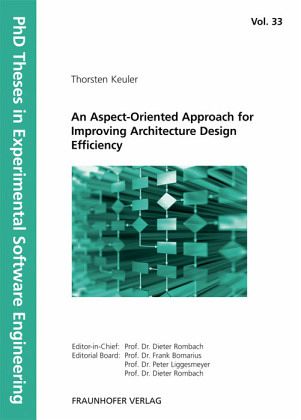
An Aspect-Oriented Approach for Improving Architecture Design Efficiency.
Dissertationsschrift
Herausgegeben: Rombach, Dieter; Liggesmeyer, Peter; Bomarius, Frank; Fraunhofer IESE, Kaiserslautern; Univ. of Kaiserslautern, Computer Science Department, AG Software Engineering
Versandkostenfrei!
Nicht lieferbar
Traditionally, software architecture utilizes the principle of separation of concerns to cope with the challenge of scalability of solutions to complex problems. For instance, by encapsulating functionality into self-contained units and applying information hiding, large and complex systems are decomposed into modules that can be developed and integrated independently. In the context of non-functional concerns, however, separation of concerns does not work as well. The main solution idea of this thesis is to leverage aspect-oriented con-cepts at the architectural level in order to provide a me...
Traditionally, software architecture utilizes the principle of separation of concerns to cope with the challenge of scalability of solutions to complex problems. For instance, by encapsulating functionality into self-contained units and applying information hiding, large and complex systems are decomposed into modules that can be developed and integrated independently. In the context of non-functional concerns, however, separation of concerns does not work as well. The main solution idea of this thesis is to leverage aspect-oriented con-cepts at the architectural level in order to provide a means for effectively and efficiently separating communication concerns in the context of architectural design



